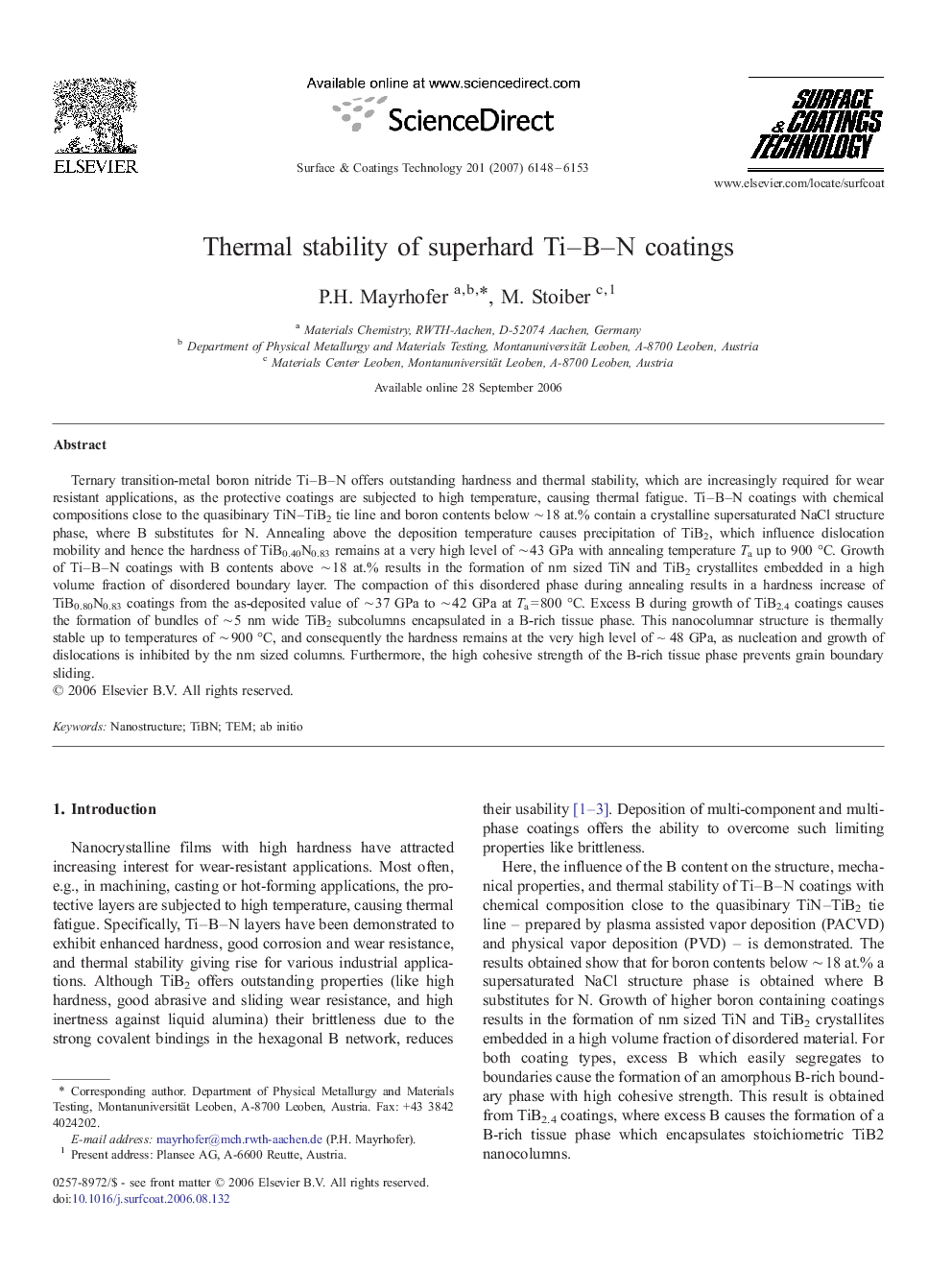| Article ID | Journal | Published Year | Pages | File Type |
|---|---|---|---|---|
| 1661350 | Surface and Coatings Technology | 2007 | 6 Pages |
Abstract
Ternary transition-metal boron nitride Ti-B-N offers outstanding hardness and thermal stability, which are increasingly required for wear resistant applications, as the protective coatings are subjected to high temperature, causing thermal fatigue. Ti-B-N coatings with chemical compositions close to the quasibinary TiN-TiB2 tie line and boron contents below â¼Â 18 at.% contain a crystalline supersaturated NaCl structure phase, where B substitutes for N. Annealing above the deposition temperature causes precipitation of TiB2, which influence dislocation mobility and hence the hardness of TiB0.40N0.83 remains at a very high level of â¼Â 43 GPa with annealing temperature Ta up to 900 °C. Growth of Ti-B-N coatings with B contents above â¼Â 18 at.% results in the formation of nm sized TiN and TiB2 crystallites embedded in a high volume fraction of disordered boundary layer. The compaction of this disordered phase during annealing results in a hardness increase of TiB0.80N0.83 coatings from the as-deposited value of â¼Â 37 GPa to â¼Â 42 GPa at Ta = 800 °C. Excess B during growth of TiB2.4 coatings causes the formation of bundles of â¼Â 5 nm wide TiB2 subcolumns encapsulated in a B-rich tissue phase. This nanocolumnar structure is thermally stable up to temperatures of â¼Â 900 °C, and consequently the hardness remains at the very high level of ~ 48 GPa, as nucleation and growth of dislocations is inhibited by the nm sized columns. Furthermore, the high cohesive strength of the B-rich tissue phase prevents grain boundary sliding.
Keywords
Related Topics
Physical Sciences and Engineering
Materials Science
Nanotechnology
Authors
P.H. Mayrhofer, M. Stoiber,
